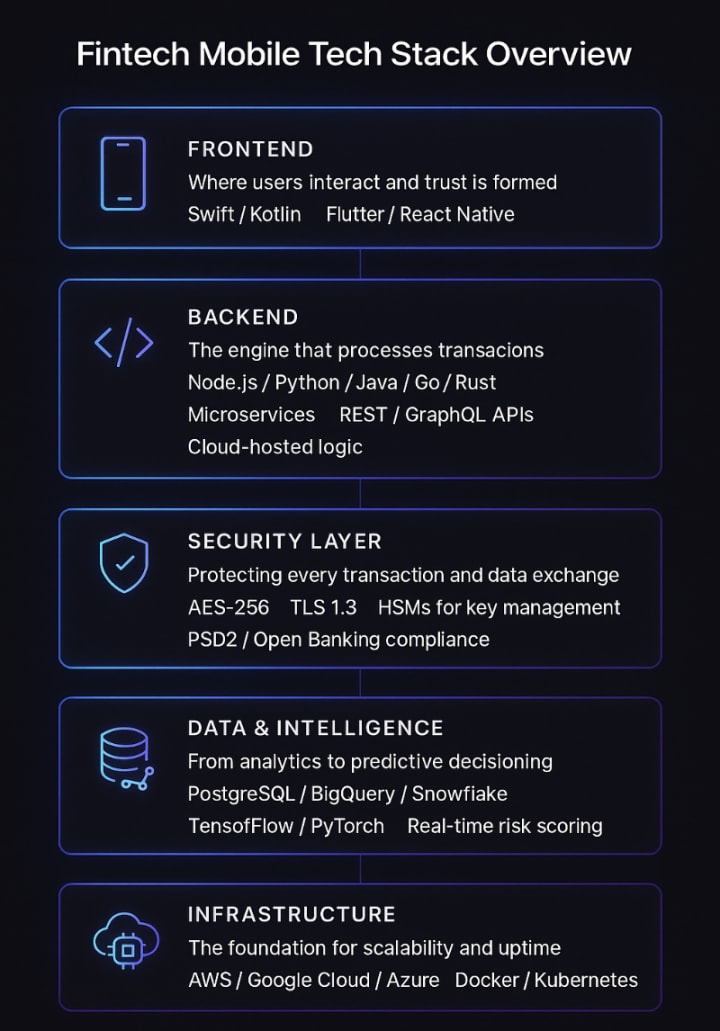Banking has outgrown the desktop. Today, finance happens in pockets — where every tap, transfer, and verification shapes how people experience trust. For fintech companies, mobile is no longer just a medium; it’s the foundation on which entire financial ecosystems are built.
Across the world, mobile phones have become the bridge between people and participation. In emerging markets, they often replace the need for physical banks altogether. The World Bank’s Global Findex 2025 shows that 86 percent of adults own a mobile phone and 79 percent now have a financial account.
This connection between access and engagement is what drives fintech forward.
The Mobile Pulse of Fintech
Every corner of fintech — banking, lending, investing, and payments — now beats to the rhythm of mobile experiences. How users feel in those moments of interaction defines whether brands earn their trust or lose it.
- Digital Banking and Neobanks
For digital banks, the app isn’t just a tool — it’s the institution itself. Account creation, transfers, and investments all happen inside an interface that must be as intuitive as it is secure. Clear design and invisible protection are what make people stay.
According to Business of Apps, neobank revenues and mobile banking adoption continue to rise in 2025, confirming that customer loyalty now lives and dies on app performance.
Payments demand perfection. Wallets and peer-to-peer apps process thousands of transactions at once, crossing currencies and borders with no room for delay. Developers must combine lightweight systems with high security and global scalability. Behind each instant payment lies an architecture tuned to milliseconds.
Mobile lending has redefined credit access. Borrowers expect decisions in seconds, and platforms deliver that through encrypted data analysis and behavior-based scoring. Building such precision means designing systems that remain transparent, fair, and efficient across every device — from high-end smartphones to entry-level models.
Investing has gone mobile, too. Real-time charts, one-click trades, and AI-powered insights have replaced the traditional broker experience. Developers walk a fine line between data complexity and design clarity, keeping users informed without overwhelming them.
Insurance and compliance have quietly gone digital as well. Photo uploads, biometric checks, and automated verification have shortened processes that once took days. What used to require paperwork now fits into a single session.
Building Fintech Apps That Earn Trust
Behind every strong fintech product lies a process that blends precision, regulation, and creativity. The outcome depends on how each stage builds confidence without slowing innovation.
1. Plan with Purpose
It begins with direction. Teams define what they’re building, who it serves, and how it stays compliant. Early clarity saves both time and credibility. Mapping user stories, risk scenarios, and performance goals transforms big ideas into structured action.
2. Design for Confidence
Design is the first handshake between brand and user. Interfaces must convey safety without clutter. Testing each step — from sign-up to verification — ensures the product feels smooth and secure from the first use.
3. Build the Core
Development gives the concept life. Teams choose frameworks that fit their priorities: native code for full control or cross-platform builds for speed. Behind the screens, APIs handle payments, identity, and compliance, ensuring the app performs invisibly and dependably.
4. Test for Integrity
Before launch, fintech products are tested for both function and trust. Security audits, stress simulations, and compliance checks prove that systems hold under pressure and protect every transaction.
5. Improve through Insight
Once live, the product evolves through analytics and feedback. Each update refines usability, regulation, and reliability. Growth in fintech isn’t just about adding features — it’s about perfecting experience.
Technology That Powers Fintech
Fintech development differs from standard mobile projects because every layer connects to real financial systems. Reliability isn’t optional; it’s survival.

Swift and Kotlin deliver the speed and control large institutions need. Flutter and React Native help startups move quickly while keeping consistency across iOS and Android. The goal in both cases is fluid interaction — fast responses and inclusive design.
Transaction engines often rely on Node.js, Java, or Python. Go and Rust are rising choices for handling concurrency at scale. Most fintech platforms use microservices hosted on AWS, Google Cloud, or Azure, with Docker and Kubernetes keeping deployments stable.
Fintech begins and ends with protection. Data is encrypted using AES-256 and TLS 1.3, with keys managed in Hardware Security Modules. APIs follow PSD2 and Open Banking standards, ensuring full transparency. Continuous audits, threat detection, and automated compliance tools make safety part of everyday operation.
Fintech data is alive — it learns. Systems built on PostgreSQL, BigQuery, or Snowflake combine with AI frameworks like TensorFlow and PyTorch to detect fraud, assess risk, and uncover insights in real time. Transparency and explainable algorithms keep automation accountable.
Challenges That Define the Industry
Fintech teams operate where regulation, simplicity, and performance intersect. Each improvement must serve all three at once.
Markets evolve faster than oversight, so products need modular architecture that supports frequent updates without breaking compliance. As new integrations emerge — payments, analytics, identity — systems grow more complex. Building resilience means preparing for stress before it arrives.
Users judge fintech products by speed, clarity, and trust. Regulators judge them by consistency and control. The best teams design systems where both sides align naturally.
Looking Ahead
Fintech’s story is really the story of trust translated into technology. Every decision, from a developer choosing an API to a designer refining a checkout screen, shapes how people relate to money.
The future belongs to systems that make security invisible, intelligence responsible, and access universal. Mobile is where that future is built, not as an accessory to finance, but as its living framework — one that keeps evolving as fast as the people who use it.

